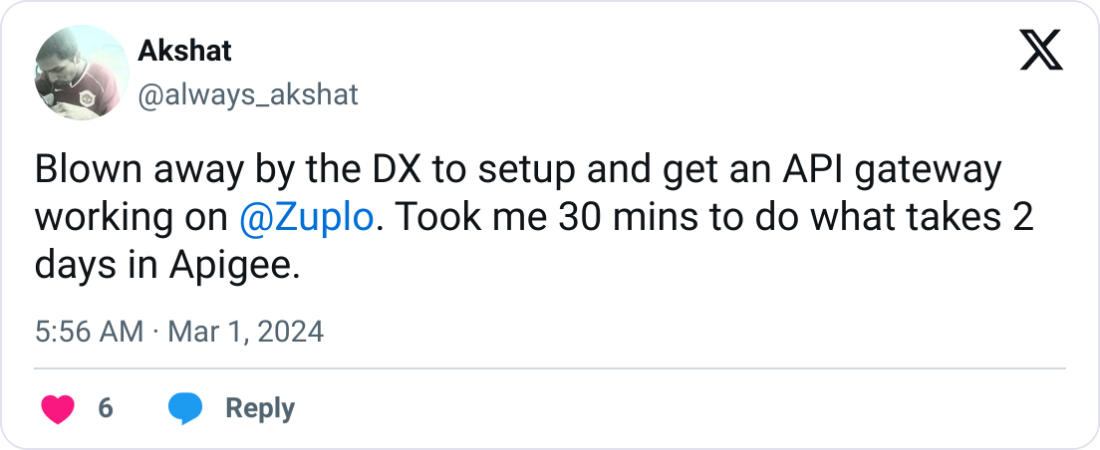When APIs break, businesses suffer. API failover systems—which redirect traffic from failing endpoints to healthy ones—are your insurance policy against costly outages. With digital services becoming the backbone of modern business operations, implementing robust failover strategies isn't just a technical consideration—it's essential for maintaining customer trust and protecting your bottom line.
The consequences of API failures extend beyond immediate technical problems. Users abandon unreliable services, competitors gain advantages during your downtime, and internal operations screech to a halt when critical systems can't communicate. Let's explore how to build API failover systems that keep your digital services running smoothly when parts of your infrastructure inevitably fail.
- Why Your APIs Need Bulletproof Protection
- Crafting Your Perfect Failover Game Plan
- Failover Architecture Patterns That Actually Work
- Technical Implementation: Making the Theory a Reality
- Seeing Trouble Before It Starts: Monitoring and Detection
- Breaking Things On Purpose: Testing Your Failover Systems
- The Road Back: Recovery and Failback Procedures
- Learning from the Best: Real-World Success Stories
- Dodging Disaster: Common Pitfalls and How to Avoid Them
- Leveling Up: API Resilience Maturity
- Your Next Steps: Implementing API Failover Today
- The Path Forward: API Architecture You Can Bank On
Why Your APIs Need Bulletproof Protection#
Success in the digital landscape requires services that work consistently, without interruption. When APIs fail, the consequences ripple throughout your entire organization, from frustrated users abandoning transactions to revenue losses that compound with every minute of downtime. That being said, let’s take a look at why APIs might break. The most common failure types include:
- Server Failures: From individual hardware crashes to entire data center outages
- Network Issues: Everything from packet loss to complete connectivity failures
- Traffic Spikes: Sudden request surges that overwhelm your infrastructure. Employing API performance optimization techniques can help manage these surges.
- Dependency Failures: When services your API relies on fail and create cascading effects
- Deployment Errors: Bugs or configuration mistakes that break functionality during updates
To measure your resilience capabilities, focus on these critical metrics:
- Recovery Time Objective (RTO): Maximum acceptable downtime (seconds/minutes, not hours!)
- Recovery Point Objective (RPO): Maximum acceptable data loss after recovery
- Service Level Agreement (SLA): Your formal uptime promise to customers
- Mean Time Between Failures (MTBF): Average time between system failures
- Mean Time To Recovery (MTTR): Average time needed to restore service
And here are the resilience patterns that should form the foundation of your strategy:
- Failover: Automatically redirecting traffic from failed components to healthy ones
- Fallback: Providing alternative functionality when services degrade
- Circuit Breakers: Temporarily stopping requests to failing services to prevent cascading failures
- Bulkheads: Isolating components to contain failures (like ships with sealed compartments)
- Timeouts: Preventing hanging requests from consuming resources indefinitely
- Retry Mechanisms: Automatically retrying failed requests with intelligent backoff
- Rate Limiting: Protecting from traffic spikes by controlling request volume. Implementing API rate limiting best practices helps with this.
- Monitoring: Early detection of issues before they become critical failures
Crafting Your Perfect Failover Game Plan#

Not all API endpoints deserve the same level of protection. Start by categorizing your endpoints by criticality:
- High: Payment processing, authentication, core business functionality
- Medium: Internal services, reporting functions, non-critical features
- Low: Administrative functions, logging endpoints, development APIs
For each endpoint, calculate a risk score by multiplying impact severity by failure likelihood. This prioritization helps you allocate resources where they matter most.
When evaluating architecture options, consider these tradeoffs:
- Active-active architecture: Highest resilience with simultaneous traffic handling but complex implementation
- Active-passive architecture: Simpler but may experience brief downtime during failover
- Multi-region deployments: Geographic redundancy with higher operational complexity
Balance technical requirements with business constraints:
- Cost vs. resilience tradeoffs: More redundancy means higher costs
- Operational complexity: Do you have the expertise to manage distributed systems?
- Growth projections: Will your solution scale with business growth?
Failover Architecture Patterns That Actually Work#
The choice between active-passive and active-active architectures forms the foundation of your failover strategy:
- Active-Passive Architecture: Your primary system handles all requests while backups wait in standby. Like a spare tire—it's not doing anything until you need it, but you're grateful it's there when you do.
- Active-Active Architecture: Multiple instances run simultaneously, all handling traffic. Provides built-in redundancy and load balancing with seamless failover since all systems are already warmed up and processing requests.
For applications serving users around the world:
- Deploy across multiple geographic areas to shield against localized failures. Operating on a global edge network can enhance performance and resilience.
- Implement global load balancing to route users to the nearest healthy region
- Establish data replication protocols to synchronize information across regions for consistency during failovers
Circuit Breakers for Preventing Cascading Failures#
The circuit breaker pattern prevents cascading failures by "failing fast" when services become unresponsive:
import (
"github.com/afex/hystrix-go/hystrix"
"net/http"
)
func main() {
// Configure the circuit breaker
hystrix.ConfigureCommand("api_request", hystrix.CommandConfig{
Timeout: 1000,
MaxConcurrentRequests: 100,
ErrorPercentThreshold: 25,
})
http.HandleFunc("/", func(w http.ResponseWriter, r *http.Request) {
err := hystrix.Do("api_request", func() error {
// API call logic here
return nil
}, func(err error) error {
// Fallback logic here
return nil
})
if err != nil {
http.Error(w, "Service unavailable", http.StatusServiceUnavailable)
return
}
// Normal response handling
})
}
Effective Caching Strategies#
Strategic caching maintains service availability even when backend systems fail:
- Edge caching through CDNs positions content closer to users
- Response caching for frequently requested data reduces backend load
- Stale-while-revalidate approaches serve cached content while fetching fresh data in background
- Cache fallbacks provide previously stored data when backends become unresponsive
You can implement these strategies yourself using a tool like Redis or Cloudflare R2 - or use an Edge-deployed API gateway (ex. Zuplo) and have it built-in.

Over 10,000 developers trust Zuplo to secure, document, and monetize their APIs
Learn MoreTechnical Implementation: Making the Theory a Reality#
Transforming resilience concepts into functioning systems requires mastering specific components that make up the backbone of your failover strategy. Let's examine the critical infrastructure elements that turn architectural blueprints into robust, failure-resistant API systems.
Load Balancer Configuration#
Load balancers serve as traffic directors for your API failover system:
- Configure comprehensive health checks including HTTP/HTTPS verification, TCP connection testing, and custom script-based validation
- Set appropriate connection and response timeouts to quickly detect failures
- Enable cross-zone load balancing to distribute traffic across multiple availability zones
- Implement sticky sessions when necessary to ensure consistent routing for the same client
API Gateway Resilience#
API gateways act as the front door for all requests and provide crucial failover capabilities:
- Deploy multiple gateway instances to eliminate single points of failure. Leveraging hosted API gateway benefits can simplify this process.
- Implement circuit breakers that prevent cascading failures when downstream services degrade
- Configure intelligent retry mechanisms with backoff algorithms to handle transient issues
- Apply request throttling to protect services from traffic spikes during partial outages
- Implement caching strategies that reduce dependency on backend services during disruptions
Database and Backend Service Failover#
Ensure data persistence and service continuity through proper backend configuration.
- Choose appropriate replication models based on your consistency and availability requirements
- Implement automated failover detection to minimize human intervention during failures
- Test backup systems regularly to verify functionality when needed
- Integrate service discovery mechanisms that dynamically update service endpoints during failover events
Seeing Trouble Before It Starts: Monitoring and Detection#
The most elegant failover architecture is worthless if you can't detect when failures occur. A comprehensive monitoring strategy, including the use of essential API monitoring tools, acts as your early warning system, identifying problems before they cascade into full system outages and triggering your failover mechanisms precisely when needed.
Critical Metrics to Track#
Monitor key performance indicators that signal potential problems:
- Response time: How long your API takes to process requests
- API Throughput: Requests processed per second
- Error rates: Percentage of requests resulting in failures
- Latency: Time delays between request and response
- Traffic patterns: Baselines for detecting anomalies
Health Check Implementation#
Implement robust health verification systems:
- Create dedicated health check endpoints rather than relying on regular API routes
- Configure appropriate timeouts to prevent health checks from hanging indefinitely
- Implement circuit breakers that automatically detect downstream service failures
- Test health check systems regularly by deliberately introducing failures
Alerting and Escalation Procedures#
Establish clear notification protocols for potential issues:
- Define specific, actionable threshold-based alerts that trigger when metrics exceed normal parameters
- Create escalation paths that route different severity levels to appropriate team members
- Develop comprehensive runbooks providing step-by-step resolution procedures
- Deploy real-time dashboards giving teams visibility into API health across the system
Breaking Things On Purpose: Testing Your Failover Systems#
Hope is not a strategy when it comes to API reliability. The only way to truly know if your failover systems work is to deliberately break things under controlled conditions. This proactive approach to resilience testing helps you discover weaknesses while you still have time to fix them, not during a critical production outage.
Chaos Engineering Principles#
Chaos engineering deliberately introduces failures to verify your system's resilience. This approach, pioneered by Netflix with their Chaos Monkey tool, is essential for validating failover systems:
- Start with small, isolated tests in non-production environments to limit risk
- Define your system's "steady state" to establish normal operational parameters
- Formulate specific hypotheses about how your system should respond to failures
- Introduce controlled disruptions that simulate real-world problems
- Measure actual system responses against expected behavior
- Address identified weaknesses before they affect users in production
Simulating Realistic Failure Scenarios#
Create test conditions that mirror genuine production problems:
- Complete service unavailability to test full failover capabilities
- Artificial latency to verify performance degradation responses
- Network partitions that prevent communication between components
- Resource exhaustion conditions affecting CPU, memory, or connection pools
- Regional outages that take entire geographic areas offline
Tools like AWS Fault Injection Simulator help create controlled failure scenarios without risking production environments.
Comprehensive Regression Testing#
Ensure failover systems continue functioning as your infrastructure evolves:
- Automate testing procedures as part of continuous integration pipelines
- Track recovery metrics like restoration time and data consistency
- Conduct tests in environments that closely resemble production configurations
- Implement feature flags that allow testing new mechanisms alongside existing ones
The Road Back: Recovery and Failback Procedures#

Failover is only half the battle—returning systems to normal operations after resolving the underlying issue requires just as much care and planning. A smooth failback process ensures you maintain data consistency, prevent new disruptions, and restore your full resilience posture without creating new problems along the way.
Automated vs. Manual Recovery#
Balance speed and control in your recovery processes:
- Automated recovery reduces downtime but provides less oversight
- Manual procedures offer greater control but take longer to execute
- Consider a hybrid approach: automated recovery for non-critical components, manual approval for mission-critical systems
Data Synchronization Strategies#
During failover periods, secondary systems process new data that must be reconciled:
- Consider implementing a brief read-only period before failback to stabilize data state
- Use incremental synchronization mechanisms that transfer only changed information
- Establish clear conflict resolution policies that determine how to handle contradictory updates
Traffic Restoration Patterns#
Return traffic to primary systems gradually rather than all at once:
- Begin with read-only operations to verify system stability before enabling writes
- Implement canary deployments that direct small traffic percentages to recovered systems
- Monitor performance closely during transition periods to catch potential issues early
Learning from the Best: Real-World Success Stories#
By studying how industry leaders have approached failover challenges, you can adapt their time-tested strategies to your own systems and avoid reinventing solutions to common resilience problems.
Amazon's E-commerce Platform#
Amazon uses Route 53 for DNS-based failover, constantly monitoring API health and redirecting traffic to healthy endpoints in milliseconds. Their architecture features:
- Active-active redundancy across multiple endpoints
- Health checks for rapid issue detection
- Geographic distribution to minimize regional failure impact
- Weighted routing policies for graceful traffic migration
Netflix's Five-Nines Approach#
Netflix's journey to 99.999% uptime (just over 5 minutes downtime per year) demonstrates advanced resilience engineering:
- Multi-region AWS deployment with redundant critical components
- Eureka service discovery for health tracking and rapid failover
- Chaos Monkey for deliberately introducing failures
- Automated monitoring and response systems
Their "chaos engineering" philosophy—deliberately testing failure scenarios to build resilience—creates systems that automatically recover from most common failures.
Dodging Disaster: Common Pitfalls and How to Avoid Them#
The path to reliable failover systems is littered with subtle traps that have ensnared even experienced teams. By understanding these common mistakes before you encounter them, you can design your resilience strategy to avoid these pitfalls entirely, saving you from painful lessons learned during critical production incidents.
Implementation Errors#
Avoid common technical missteps that compromise failover effectiveness:
- Superficial health checks miss genuine problems—implement deep verification that confirms actual functionality
- Circuit breaker misconfigurations can trigger unnecessary failovers—establish appropriate thresholds based on normal traffic patterns
- Hasty failback often creates secondary outages—implement appropriate cooldown periods before returning to primary systems
Configuration and Testing Gaps#
Prevent problems stemming from incomplete planning and verification:
- Inconsistent timeout settings across services create race conditions—standardize these values throughout your stack
- Incomplete testing leaves blind spots—verify end-to-end failover scenarios, not just individual components
- Limited monitoring prevents early problem detection—track both technical metrics and business outcomes
Distributed Systems Challenges#
Address the inherent complexities of multi-component architectures:
- Prevent cascading failures by implementing bulkheads that isolate critical components
- Monitor database replication continuously to catch synchronization issues before they affect consistency
- Avoid geographic clustering that places redundant systems in single regions vulnerable to localized outages
Leveling Up: API Resilience Maturity#
API resilience isn't a binary state—it's a spectrum of capabilities that organizations develop over time. Understanding where you currently stand in terms of API resilience maturity and what the next level looks like helps you chart a practical path forward.
Basic (Reactive) Level#
Organizations at this stage typically have:
- Single-region deployment with limited redundancy
- Manual failover processes requiring human intervention
- Basic monitoring without sophisticated anomaly detection
- Recovery from failures typically takes hours
- Incidents often result in significant downtime and business impact
Standard (Proactive) Level#
At this stage, organizations implement:
- Active-passive configuration providing basic redundancy
- Automated failover processes for critical components reducing human dependency
- Comprehensive monitoring with alerting for predefined thresholds
- Recovery from most incidents occurs within minutes
- Regular testing verifies failover capabilities before production problems occur
Advanced (Predictive) Level#
Organizations reaching this maturity deploy:
- Multi-region infrastructure with active-active configuration
- Fully automated failover mechanisms requiring minimal human intervention
- Real-time monitoring includes sophisticated anomaly detection
- Recovery from most incidents happens within seconds
- Regular chaos engineering practices deliberately test resilience
Leading (Preventive) Level#
The most sophisticated organizations implement:
- Global distribution with edge computing capabilities
- AI-driven predictive monitoring identifying potential issues before they manifest
- Self-healing systems automatically address many problems without human involvement
- Near-zero downtime occurs during most failures due to seamless failover
- Comprehensive chaos engineering programs continually verify and improve system resilience
Your Next Steps: Implementing API Failover Today#
All the resilience theory in the world means nothing without practical implementation. Rather than getting overwhelmed by the complexity of comprehensive failover systems, focus on these actionable steps that will immediately strengthen your API reliability posture and create a foundation for more advanced resilience capabilities in the future.
Assessment and Planning#
Begin with thorough evaluation:
- Map all API dependencies and potential failure points throughout your architecture
- Document current recovery objectives for time and data loss tolerance
- Evaluate existing monitoring capabilities against requirements for early problem detection
- Create prioritized improvement plans based on risk assessment and business impact
Architecture Enhancements#
Implement technical foundations:
- Add redundancy at multiple system levels eliminating single points of failure
- Configure load balancing with comprehensive health checks verifying genuine availability
- Deploy circuit breakers for dependent services preventing cascading failures
- Implement appropriate caching strategies reducing dependency on backend availability
Building Robust Processes#
Establish operational foundations:
- Develop clear incident response procedures defining roles and responsibilities
- Create automated runbooks for common failure scenarios ensuring consistent handling
- Establish regular testing schedules verifying failover capabilities before real problems occur
- Implement post-incident review processes extracting improvement opportunities from each event
The Path Forward: API Architecture You Can Bank On#
Building resilient API failover systems isn't just about technology—it's about protecting your business from the inevitable disruptions that occur in complex digital environments. By implementing proper architecture, monitoring, and testing practices, you can create systems that maintain availability even when components fail, preserving customer trust and business continuity.
Ready to transform your API reliability? Zuplo provides developer-focused tools for implementing robust API failover strategies, with easy-to-deploy policies for performance optimization and resilience. Zuplo is also fully-programmable, allowing you to define custom fallback behavior, and run it at the Edge! Sign up for a free Zuplo account today and start building APIs that stay available even when things go wrong.